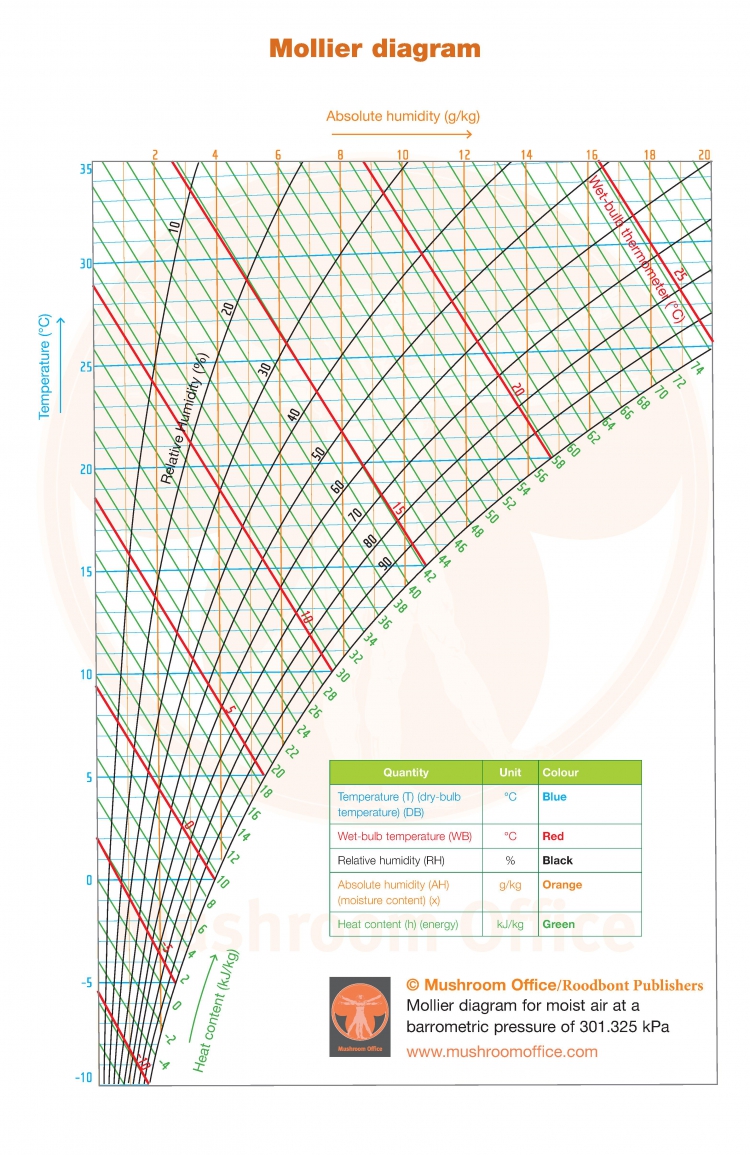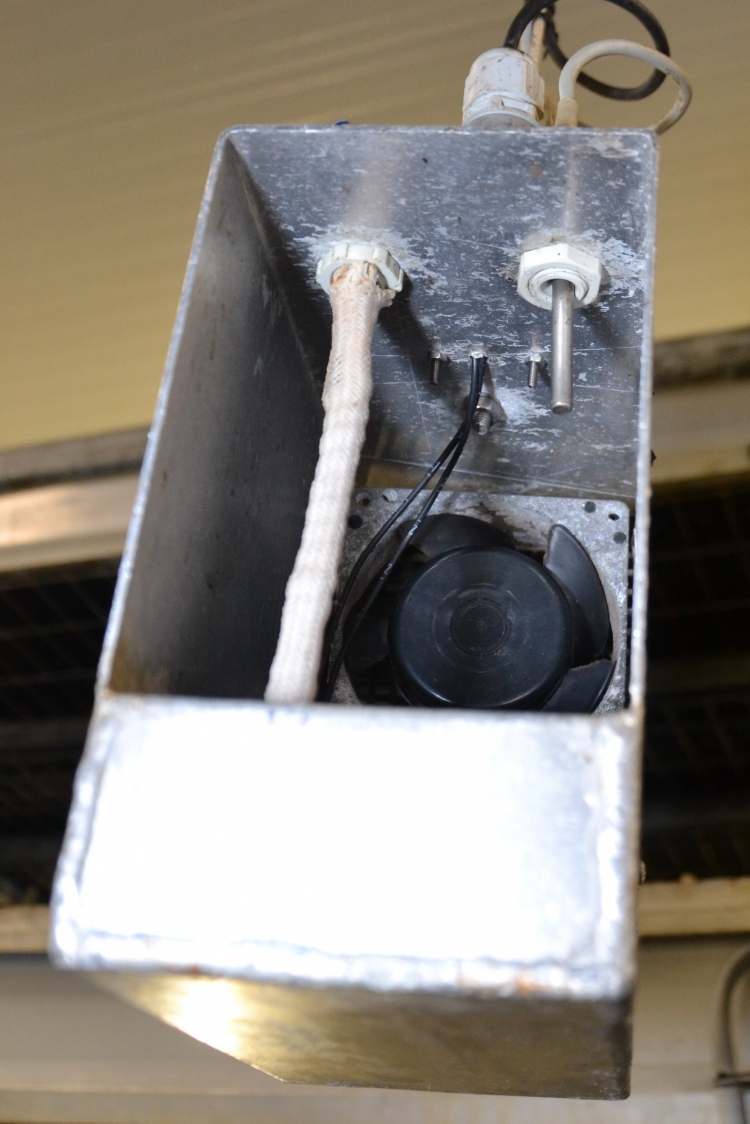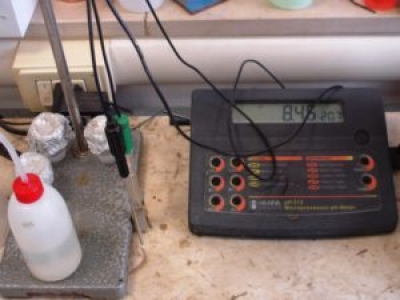
Mushroom training and courses (15)
Casing soil
Why is casing soil used? There are two main reasons: 1. the Pseudomonas putida bacterium; 2. to regulate evaporation. Mushrooms will not grow without evaporation. The casing soil structure, through the depth of casing and on the surface, is the factor that determines how much water can absorbed and released. This is also known as the water buffer. How can growers influence this effect?
Properties
Casing soil is made up of peat. Peat consist of many small and larger pores which act as communicating structures that affect the flow of water. The very tiny (micro) pores absorb water very slowly, but retain it for a long time. The larger (macro) pores can absorb water faster but release it again very quickly. In good casing soil, both properties are necessary: rapid absorption of water: during mycelium growth and after harvesting, and slow release: during pinhead formation and out grow, and when the mushrooms are harvested.
Air
What is the secret of casing soil? Ensure that the moisture content of the casing soil is good. With “export” casing soil, you have to apply enough water and mix the casing with a loader or bobcat. Ask the supplier for instructions and follow them correctly. This has already been done with casing soil delivered in bulk and ready to use. Casing soil is sensitive to structure loss just before it is applied. If the casing soil is compacted or compressed, the “air” will be squeezed out. This effectively closes off the very crucial micro pores. The casing soil will feel harder. During transport and filling avoid compacting the casing soil too much, for example when using augers, over-filling the hopper on the filler or in front of the levelling axle during filling.
Soft
Casing soil should feel nice and soft. Straight after filling, push your finger into the casing soil. You should be able to plunge your finger in easily and without resistance. Experience will teach you how to feel the difference. A good layer of casing soil after filling is about 6 cm thick. The amount ordered is much less, around 4.5 cm. The rest is air, and these air pockets can largely be filled with the water necessary for the mushrooms to grow!
Mark den Ouden
Mushroom Office
Master class course Mushroom composting and growing is 18 – 23 February, there are still some seats available! Please contact This email address is being protected from spambots. You need JavaScript enabled to view it. ASAP if you want to join! Next course will be 29 April – 4 May.
Mollier diagram
What is the absolute moisture content of the air? Or the enthalpy of the air? More and more growers have a handy app that reads out these values. I always ask: “What do you do with this data?” I don’t always get an answer. Because it’s not about the numbers. The best way to understand this is to use a sponge as an example. It’s much clear and you can combine it with the Mollier diagram. Use this link to download the coloured Mollier diagram (pdf).
A sponge?
Air can be compared to a sponge. As air cools, it shrinks. This means its holds less moisture. The same thing happens if you squeeze a wet sponge. So how does this work in the Mollier diagram? Trace the blue line straight downwards and the diagram will literally show you what happens. The temperature drops and the RH rises. Following the lines in the Mollier diagram gives you insight into what happens to the climate. Simply reading values in an app doesn’t give you the same understanding. My philosophy is to draw lines on the diagram. Doing this will teach you much more about the effects on the climate that just reading some figures!
Conclusion: download the Mollier diagram and place it close to the climate controller so you gain a better understanding of what the climate controller does. If this doesn’t work, there are two options:
The basic settings in the climate controller are incorrect. In my consultancy role I often ask: “Why is the growing room climate set this way?” The answer is sometimes: “The computer controls and regulates the climate”. But who controls the computer? You do, so you have to understand how it works! If not, ask your advisor or installer for help.
Or
You don’t understand fully how the Mollier diagram works. For a good, step-by-step explanation take a look at chapter 6 about the Mollier diagram in the Mushroom Signals book. This chapter clearly explains all the principles of how to read and understand the diagram.
Mark den Ouden, Mushroom Office
Master class course 22-27 October is almost fully booked, next course 18-23 February 2019!
Blog on relative humidity measurement
Climate in the growing room
All growers recognise the importance of climate in the growing room. How the climate feels when you enter the growing room is a good indicator. Sometimes what your instinct says goes against what the data from the climate control computer suggests. Experience can help you finetune that “instinct” if you go into the growing rooms daily. In this blog I will be give you some simple tips of things to check in relation to RH measurements every time you inspect the growing rooms. This can help avoid errors in measurements and climate control.
Clean the water reservoir
The growing room is cleaned after it has been emptied. Cleaning the RH measuring box should be part of this routine. Ensure the water reservoir of the RH measuring box is emptied and cleaned. It wouldn't be the first time a slimy bacteria forms in the reservoir, so that even the new sock or wick feels slimy. This reduces evaporation, resulting in a higher RH measurement than in reality.
Replace the sock
When you clean the growing room remove the sock from the wet bulb sensor. Do not replace it immediately but wait until the room is filled. While there is no sock in the wet bulb, the wet bulb and the dry bulb should both give the same temperature reading. This is a routine action that can prevent a lot of headaches. On many farms, this is only done sporadically - or not at all - so a long time passes before anyone notices any deviations. And problems can occur fast, as just 0.1OC deviation is already a 1% difference in RH!
The fan
There is a fan in the RH measuring box in the majority of climate control systems. This ensures a constant flow of air over the sensors. The fan can sometimes malfunction. This is not reflected at once in the RH measurement, so checking whether the fan is still running by listening when you look at the RH measuring box is a small, but very worthwhile, task.
Replace the sock later on?
During mycelium growth the RH is not that important as water is still sprayed onto the casing soil. If drier air causes the casing to dry out faster, it is easy to add more water into the casing.
So you could think: “Let's just replace the sock later”. Completely wrong. Why? The Mollier diagram of course! By also measuring the wet bulb temperature, the computer can determine the energy level in the air. This enables the computer to decide whether to use outside air for cooling. If there is no sock, the computer will always measure a higher energy level because it “thinks” the RH is always 100%. The result will be extra costs for cooling because the computer decides too quickly to use outside air which has a higher energy level than the actual air in the growing room. You will use more energy and risk burnt compost due to an insufficient cooling capacity.
Mark den Ouden
Mushroom Office
Next Masterclass Compost and Mushroom course are:
22 to 27 October 2018
18-23 February 2019
See www.mushroomoffice.com
Which factors determine the pH value?
My previous blog described what the pH should do during the composting process. This blog examines the role of the raw materials, such as ammonium sulphate, gypsum and water.
Ammonium sulphate, (NH4)2SO2
During indoor composting, NH3 is removed from the air by a reaction of the air to sulphuric acid, H2SO4. The by-product resulting from this process is ammonium sulphate, (NH4)2SO2. ammonium sulphate can be added to compost as a source of nitrogen. This reduces the pH value of the compost.
Gypsum?
What is the principle property of gypsum? The acid binding capacity of gypsum neutralises the pH in the compost. So what does gypsum actually do? Gypsum also makes the chicken manure less sticky. The advantage of this is that the manure can be mixed through the decomposed straw better. The gypsum ensures the compost structure stays open and airy and is less inclined to become anaerobic. As the previous blog explained, this is a very important condition to ensure the pH falls during the process.
Water
Gigantic amounts of water are applied during phase I. The moisture content of the straw rises from 5- 20% to a moisture content of 74- 76% at the moment of filling into the phase II tunnel. That moisture is created by the added water. The pH of the water therefore has a far greater influence than you might think.
Rain water/groundwater
If a lot of rainwater, with a pH of 6 or even lower, is used during the rainy season, and more groundwater, with a pH of 7, during the dry season, you will also notice that the pH value gradually changes over time. The water is recycled at the composting plant, which explains the gradual change.
Anaerobic water
If the recycled water, or process water, is stored in a reservoir, it must not be allowed to become anaerobic. If water does become anaerobic, all the micro-organisms in the water will be destroyed and the pH value of the process water will fall sharply. This will cause poor results at the end of the composting process.
Mark den Ouden
Tips from Mark den Ouden
In mushroom growing there are many roads that lead to Rome. The key question is not which road you take but why you take it. This question is often difficult to answer. The answer will give you an understanding of your composting and growing processes and how to improve them. I guide you through all this with training and advice. And together we discover ways of improving your bottom line. Because that is ultimately what it is all about.
Visit my website Mushroom Office for tips and advice.

























